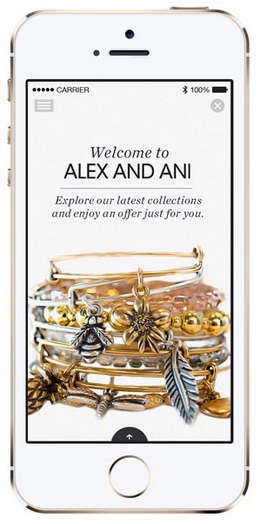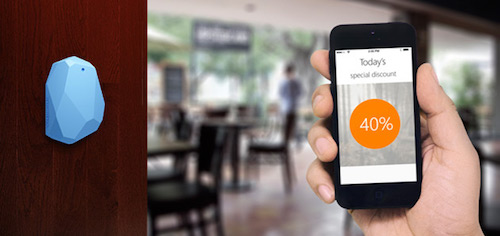Business Is Better with Beacons: Understanding an Important New Retail Technology
February 07, 2018 (0 comments)
Beacons are becoming increasingly relevant to the jewelry retailer. This technology, which uses a small Bluetooth transmitter to connect with customers’ smartphones and mobile devices, has been around for a few years now, but it’s taken some time for the retail industry to understand how to best make use of it. Now, after pioneering work done by mega-retailers like Walmart, Target, and even McDonalds, we have a better understanding of how beacons can benefit the independent jewelry retailer.
Customers prefer to shop for jewelry in person. Research from Salesforce reveals that two-thirds of US internet users choose brick and mortar shopping experience for accessories, clothing and footwear. Being able to see, evaluate and try on products in these categories matters to the customer.
Beacon technology can be used to enhance the in-store experience. Marketing firm Y&R found that 53.4% of women research purchases on their smartphone; having this information proactively offered can streamline the decision making process. This information can be relevant to a particular piece of jewelry, a designer line, custom options available, upcoming events or whatever else you deem helpful to your customers. Walkers Sand’s 2016 Future of Retail report states that 36% of shoppers appreciate having product information, including reviews, available to them via their smartphones. In store mapping functionality appealed to almost a third of respondents, as it helps them find the precise items they’re looking for more efficiently.
Beacons collect valuable shopping behavior data. Beacons can track foot traffic patterns in your store, detailing where your customers go and where they’re spending their time. This information can be used to optimize store layouts; underperforming lines can realize a real boost simply by being positioned where more people see them.
Alex and Ani did this in all 40 of their retail locations. During this campaign, the brand took advantage of the beacon’s ability to transmit information to educate nearby shoppers about their jewelry. 30% of the people who received these messages visited the store.

Customers have privacy concerns but are very open to deals. Forty-six percent of customers surveyed by Walkers Sand state they find beacon technology creepy. However, two-thirds of those same respondents stated they were open to receiving messages, particularly if they received a discount or savings coupon. Earning loyalty program rewards and expedited checkouts were also considered appealing enough to override concerns about beacons being too intrusive.
Major retail brands are acclimatizing customers to beacon use. Neiman Marcus, Nordstrom’s, Kenneth Cole and Macy’s all use beacons, as do Urban Outfitters and American Eagle. Shopping in these beacon-enabled environments will normalize being contacted as part of the retail experience; customers who encounter the technology in your store will be familiar with the experience.
 Estimote iBeacon.
You don’t need your own app to benefit from beacons.
Estimote iBeacon.
You don’t need your own app to benefit from beacons. Beacons can be used to direct nearby users to a secure webpage, where you can offer coupons, share product information, and more. Additionally, retailers can use beacons to participate in third-party notification systems, such as Google’s recently released new feature, Nearby, which makes users aware of websites and apps relevant to their geographic location.
If you do have an app, beacons can encourage users to install or launch it. After installing an app, 77% of smartphone owners never use it. According to Google, one in four apps is never used at all. Beacons provide retailers a way to realize more of a return from the apps they created: by prompting users to install or launch the app, engagement rates go up. More customers are exposed to the savings opportunities made available via the app, and as a result, sales increase.